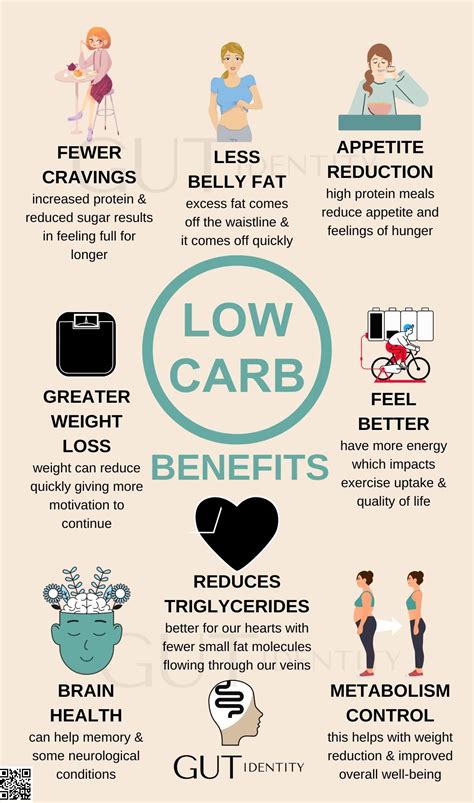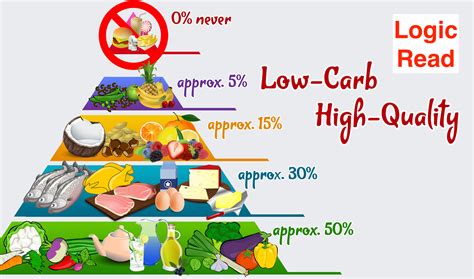Intro
Living a healthy lifestyle is a goal that many of us strive for, and one of the most effective ways to achieve this is by adopting a low-carb diet. With the numerous benefits that come with reducing carbohydrate intake, it's no wonder that more and more people are turning to low-carb diets as a means of improving their overall health and wellbeing. From weight loss to improved blood sugar control, the advantages of low-carb living are undeniable. However, making the transition to a low-carb lifestyle can be daunting, especially for those who are used to consuming high amounts of carbohydrates. This is why it's essential to have a solid understanding of how to navigate a low-carb diet effectively.
The importance of education and planning cannot be overstated when it comes to adopting a low-carb lifestyle. By understanding the basics of low-carb diets and how they work, individuals can set themselves up for success and make informed decisions about the foods they eat. Moreover, having a clear plan in place can help to prevent common pitfalls, such as carbohydrate cravings and nutrient deficiencies. With the right knowledge and support, anyone can successfully transition to a low-carb diet and start experiencing the many benefits that come with it.
One of the key challenges that many people face when adopting a low-carb diet is figuring out what to eat. With so many carbohydrate-rich foods available, it can be difficult to know where to start. However, by focusing on whole, nutrient-dense foods, such as meats, vegetables, and healthy fats, individuals can create a balanced and satisfying low-carb diet. Additionally, there are many delicious and creative low-carb recipes available, making it easier than ever to stick to a low-carb lifestyle.
Understanding Low-Carb Diets

Types of Low-Carb Diets
Some of the most popular low-carb diets include: * Ketogenic diet: a high-fat, low-carbohydrate diet that aims to put the body into a state of ketosis, in which it burns fat for energy * Atkins diet: a low-carbohydrate diet that restricts carbohydrate intake in the initial phases, with a gradual increase in carbohydrate consumption over time * Paleo diet: a diet that focuses on whole, unprocessed foods, excluding grains, dairy, and other high-carbohydrate foods Each of these diets has its own unique approach and guidelines, and it's essential to choose a diet that aligns with your individual needs and goals.Benefits of Low-Carb Diets

Common Low-Carb Foods
Some common low-carb foods include: * Meats: beef, pork, lamb, and chicken * Fish and seafood: salmon, tuna, shrimp, and lobster * Eggs: a versatile and nutritious low-carb food * Vegetables: leafy greens, broccoli, cauliflower, and avocado * Healthy fats: olive oil, coconut oil, and avocado oil These foods provide a solid foundation for a balanced and satisfying low-carb diet.5 Low-Carb Tips

Low-Carb Meal Ideas
Some delicious and creative low-carb meal ideas include: * Grilled steak with roasted vegetables * Baked salmon with cauliflower rice * Low-carb pizza with a cauliflower crust * Chicken stir-fry with vegetables and healthy fats These meals are not only delicious, but also provide a balanced and satisfying low-carb diet.Low-Carb and Weight Loss

Common Low-Carb Mistakes
Some common mistakes to avoid when following a low-carb diet include: * Not planning ahead: failing to plan out meals and snacks in advance can lead to carbohydrate cravings and poor food choices. * Not staying hydrated: drinking plenty of water is essential for overall health, and can help to prevent carbohydrate cravings and support weight loss. * Not being mindful of portion sizes: even healthy foods can be detrimental to a low-carb diet if consumed in excess. * Not seeking support: adopting a low-carb lifestyle can be challenging, particularly in the early stages. Seeking out support from friends, family, or a healthcare professional can help to stay on track and achieve goals.Low-Carb and Blood Sugar Control

Low-Carb and Inflammation
Some of the ways in which low-carb diets can help to reduce inflammation include: * Reducing oxidative stress: low-carb diets can help to reduce oxidative stress, which can contribute to inflammation. * Improving insulin sensitivity: low-carb diets can help to improve insulin sensitivity, which can reduce inflammation. * Increasing antioxidant intake: low-carb diets often emphasize whole, nutrient-dense foods, which can provide a range of antioxidants and anti-inflammatory compounds.What is a low-carb diet?
+A low-carb diet is a dietary approach that focuses on reducing the intake of carbohydrates, such as sugars, starches, and fibers.
What are the benefits of a low-carb diet?
+The benefits of a low-carb diet include weight loss, improved blood sugar control, increased energy levels, and reduced inflammation.
What foods should I eat on a low-carb diet?
+On a low-carb diet, focus on whole, unprocessed foods, such as meats, vegetables, and healthy fats. Avoid processed and packaged foods, as well as high-carbohydrate foods like grains and sugars.
In conclusion, adopting a low-carb lifestyle can be a highly effective way to improve overall health and wellbeing. By understanding the basics of low-carb diets and how they work, individuals can set themselves up for success and make informed decisions about the foods they eat. With the right knowledge and support, anyone can successfully transition to a low-carb diet and start experiencing the many benefits that come with it. We encourage you to share your own low-carb experiences and tips in the comments below, and to consider sharing this article with friends and family who may be interested in adopting a low-carb lifestyle.
